Chemistry and Chemists № 3 2025
Journal of Chemists-Enthusiasts
| Content | Chemistry experiments - video | Physics experiments - video | Home Page - Chemistry and Chemists |
|
Chemistry and Chemists № 3 2025 Journal of Chemists-Enthusiasts |
"Bathing" the Desiccator. What to Do if the Desiccator Lid Doesn't Open? Chemist |
|
Having noticed a mistake in the text, allocate it and press Ctrl-Enter
"Bathing" the Desiccator. What to Do if the Desiccator Lid Doesn't Open?
A desiccator is a special container designed to protect samples from atmospheric moisture and to dry them. It contains a desiccant and is hermetically sealed. Typically, a desiccator is a glass vessel with a characteristic round shape. A lid is located on top, forming a dome to increase the internal volume. The lid seals tightly, preventing moisture from entering.
"Купание" эксикатора. Что делать, если крышка эксикатора не открывается? A heat-resistant plate (for example, porcelain) with holes is placed at the bottom, dividing the desiccator chamber into two unequal parts. The lower, smaller part holds the desiccant - e.g., anhydrous calcium chloride, silica gel, or concentrated sulfuric acid in an evaporating dish. The upper part is used for samples that require drying or protection from moisture. These can include crucibles, evaporating dishes, or Petri dishes containing a substance. The lid, bottom, and sides of the desiccator are made of thick glass. The top of the desiccator lid may have a vacuum stopcock for evacuating air from the chamber with a vacuum pump. Using a vacuum facilitates the removal of moisture and allows samples to be stored in an air-free environment. Such desiccators are known as vacuum desiccators. The lid should always be opened by gently sliding it to the side. If the desiccator is of the vacuum type, the stopcock must be opened carefully before lifting the lid to equalize internal and external pressures. I needed a desiccator for my tritium determination work. I have several in the lab, and one of the largest was empty. I tried to open it, but it wouldn't budge - the lid was pressed tightly against the body. What was the cause? Typically, problems opening a desiccator occur when hot objects (such as crucibles or evaporating dishes) are placed inside and the lid is closed immediately afterward. The air inside expands, creating increased pressure that lifts the lid and lets some air escape. At this point, the lid can even slip, fall, and shatter. The lid is the most vulnerable part of a desiccator. When moving a desiccator, always hold the lid with your fingers from above, pressing it lightly against the body. When the excess warm air has escaped, the pressure equalizes. Gradually, the crucibles - and the air inside - cool to room temperature. As a result, the internal pressure drops, creating a partial vacuum, and the external air pressure presses the lid tightly against the body. To prevent this, place the hot crucibles in the desiccator but leave a small gap between the lid and the body. After a few minutes, the lid can be closed completely. Then, after about five minutes, slightly open the lid again and reseal it to equalize the pressure. In my case, the desiccator was empty; I hadn't used it for several months. The last time I opened it, it was summer and the weather was hot. Now it was autumn, and the lab was cold. As the air inside cooled, its pressure decreased, and the external air pressure pressed the lid firmly against the body. If the desiccator had been a vacuum one, the problem could have been solved instantly by opening the stopcock. The pressures would have equalized, and the lid would have opened easily. However, this desiccator had no stopcock. All our attempts to move the lid, even with considerable force, failed. My colleague suggested inserting a thin metal spatula between the lid and the body, but I categorically forbade it. The spatula could easily damage the seal between the lid and the rim. Since the desiccator was stuck because it had cooled down, I decided it needed to be warmed. However, "heating the desiccator" is easier said than done. Desiccators are made of thick glass, which provides high mechanical strength but low thermal resistance. In general, the thicker the glass, the less it tolerates sudden temperature changes. Should I place the desiccator in a drying cabinet? A drying cabinet doesn't heat uniformly, and the desiccator could crack. Besides, this one was too large to fit inside. Then I came up with the idea of using warm water to heat it gradually. I poured room-temperature water into a large plastic basin. I heated another portion of water in a kettle to boiling and poured it into the basin. The basin wasn't laboratory equipment but rather intended for washing clothes - but I ignored that fact. After mixing the hot and cold water, the basin contained pleasantly warm water. I placed the desiccator in it to warm the glass slowly and raise the internal air pressure to match the external one. However, the heating process was slow - the desiccator was massive. An hour and a half passed, and the glass above the water's surface was still cold. I carefully added more boiling water to the basin, but it didn't help. I still couldn't move the lid. Then I cautiously poured small amounts of hot water from the kettle directly onto the lid. This was risky, as the temperature difference could cause the glass to crack. Fortunately, it didn't. Finally, the lid slid with minimal effort. The irony is that the desiccator is designed to dry samples and protect them from moisture - yet I had to immerse it in a large basin of water to open it. |
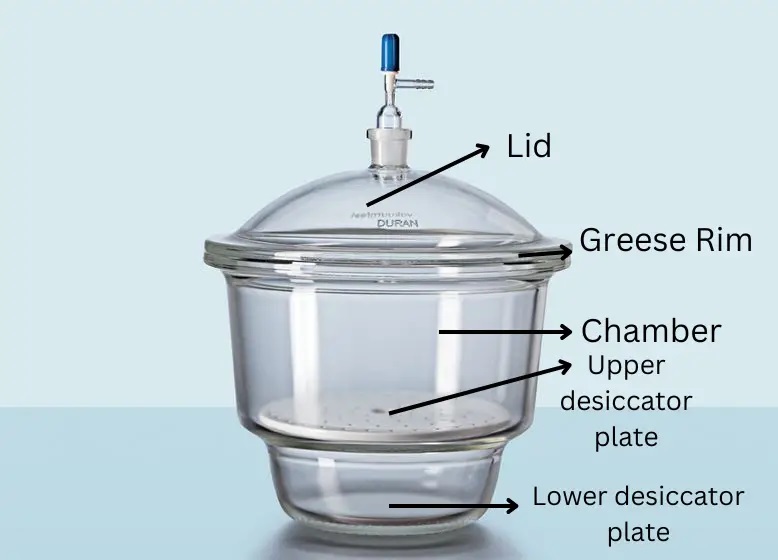
Desiccator |
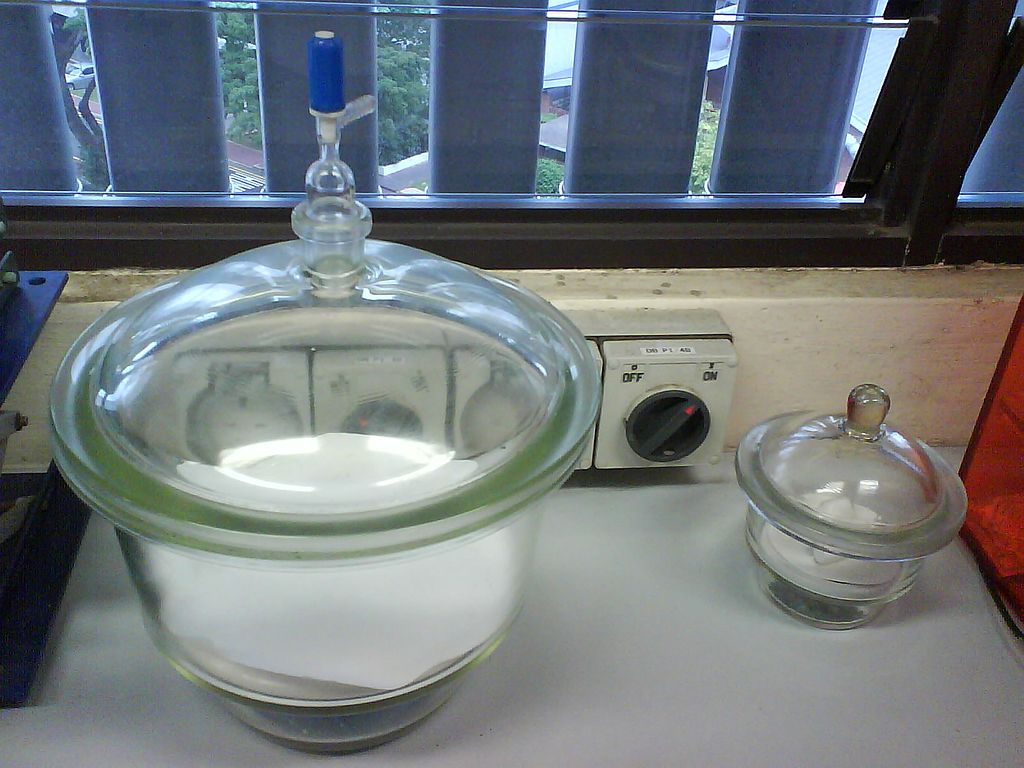
|
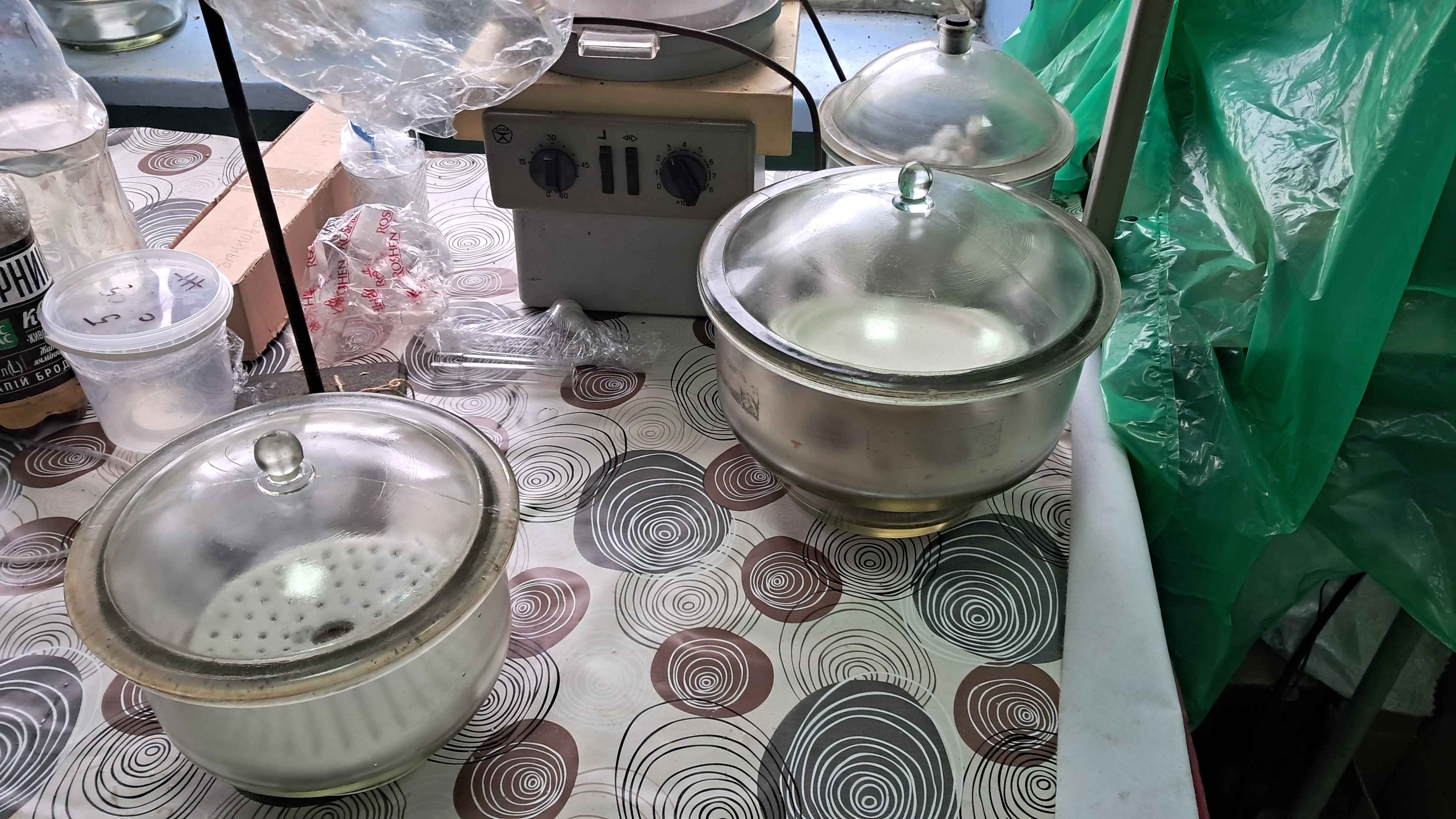
''Bathing'' the Desiccator. What to Do if the Desiccator Lid Doesn't Open? |
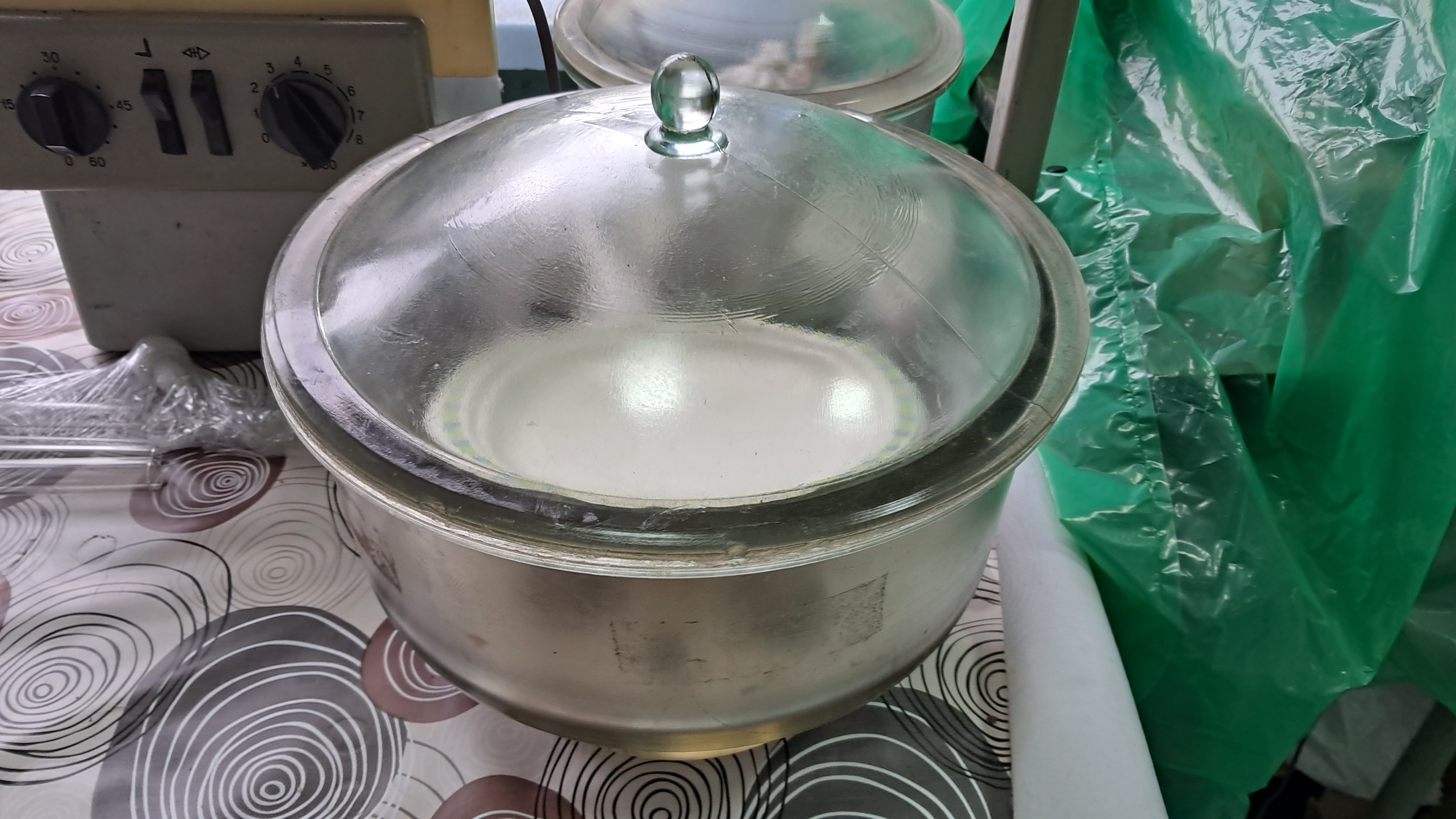
|
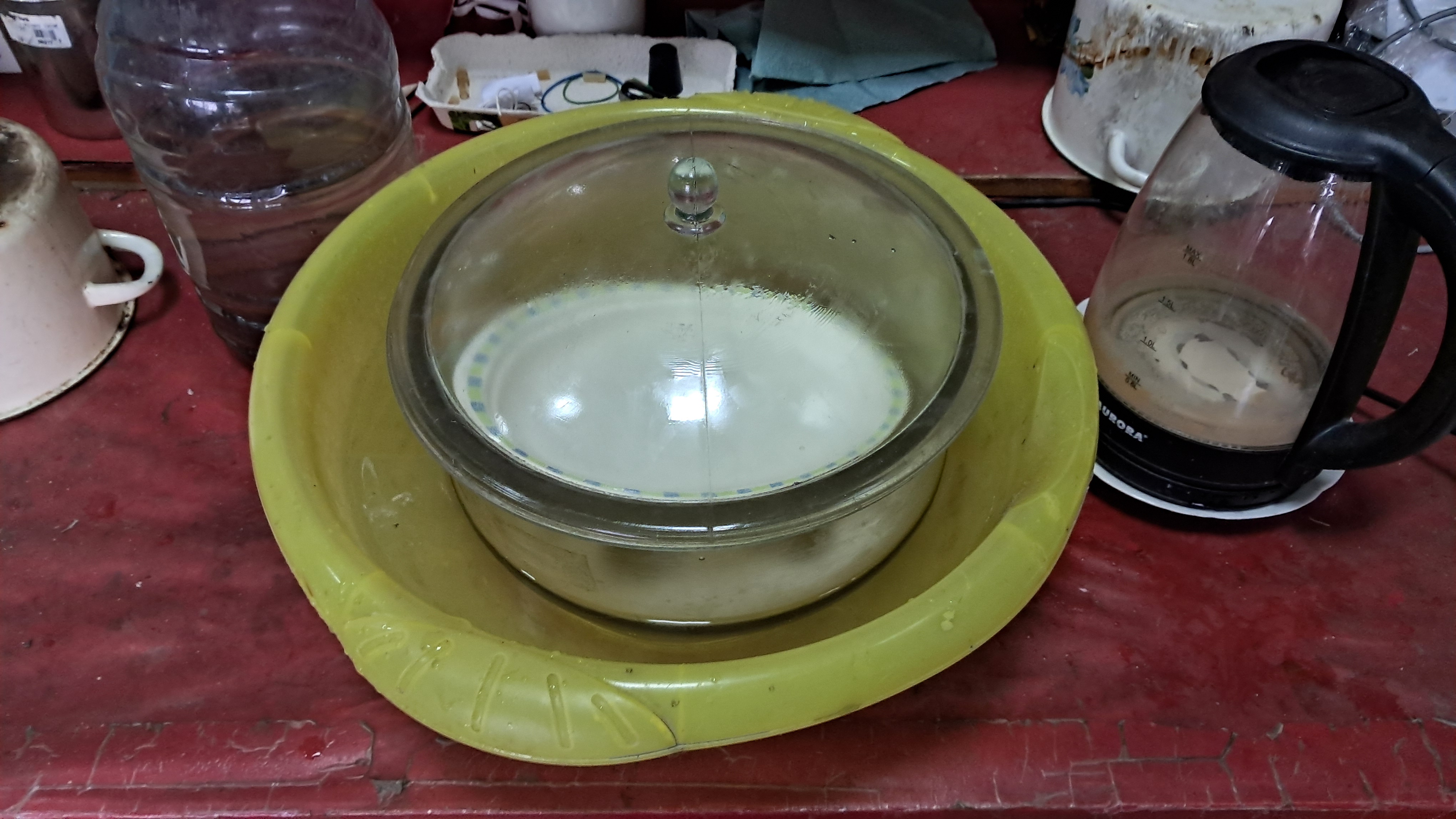
|
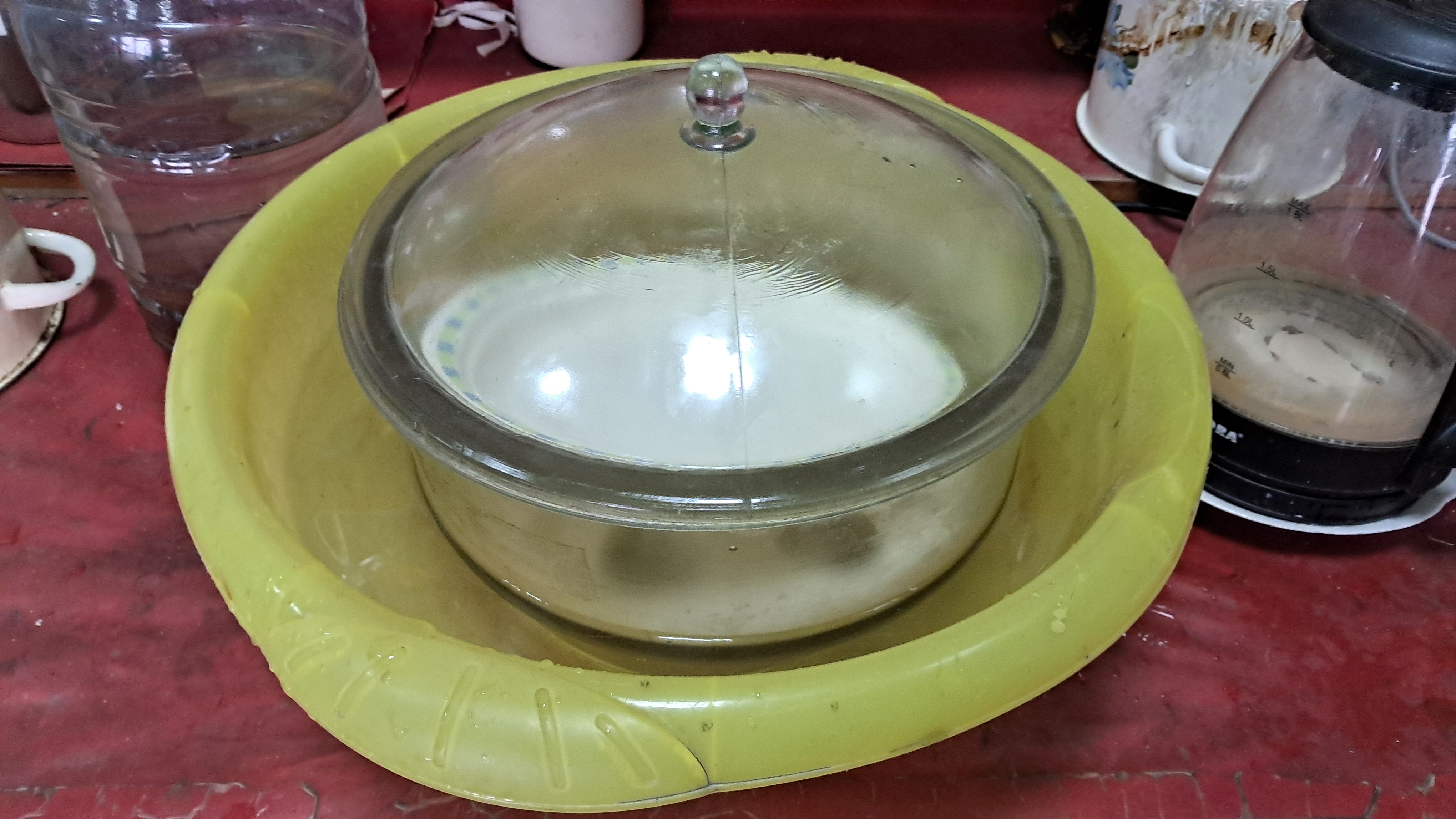
|
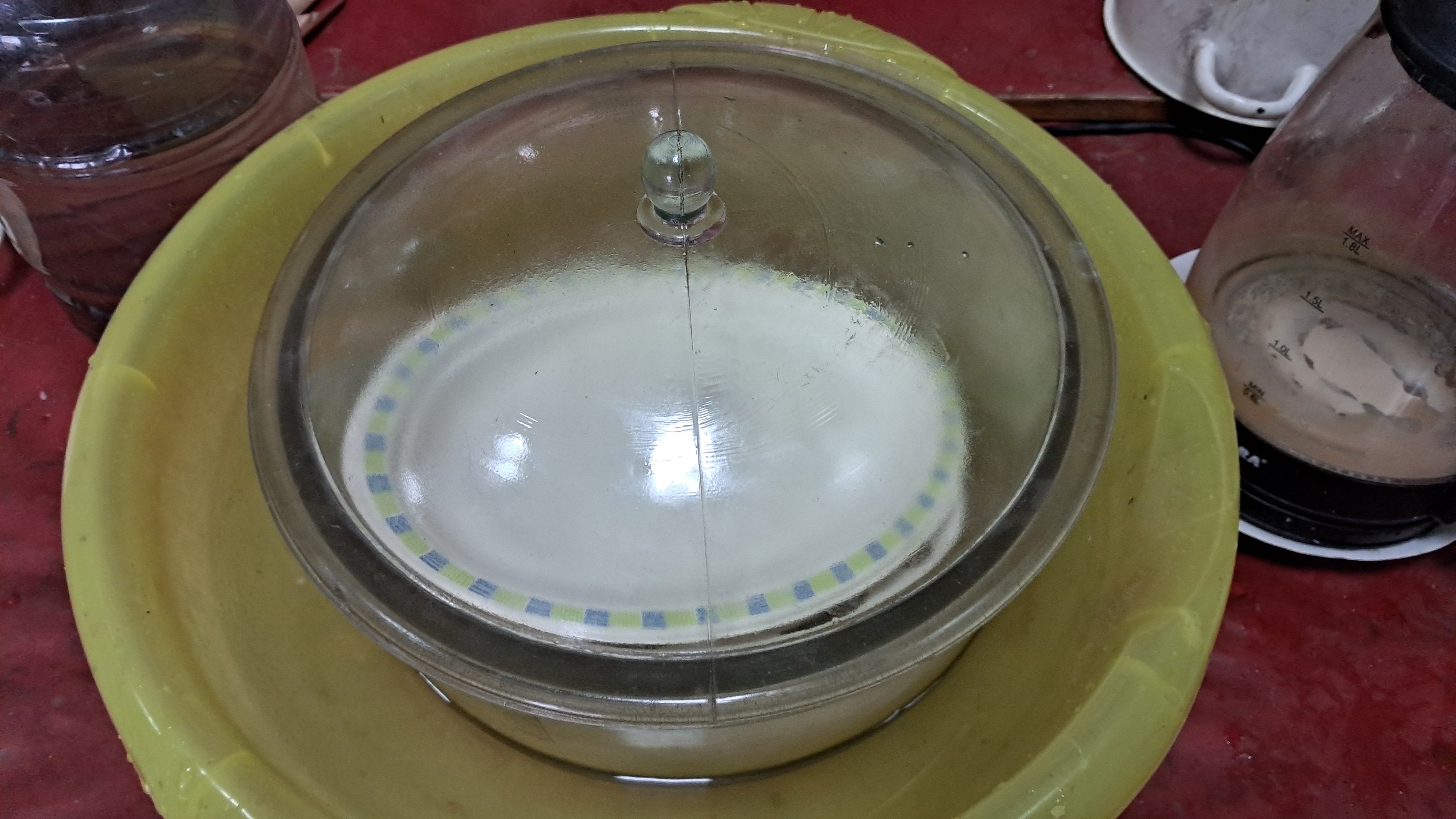
|
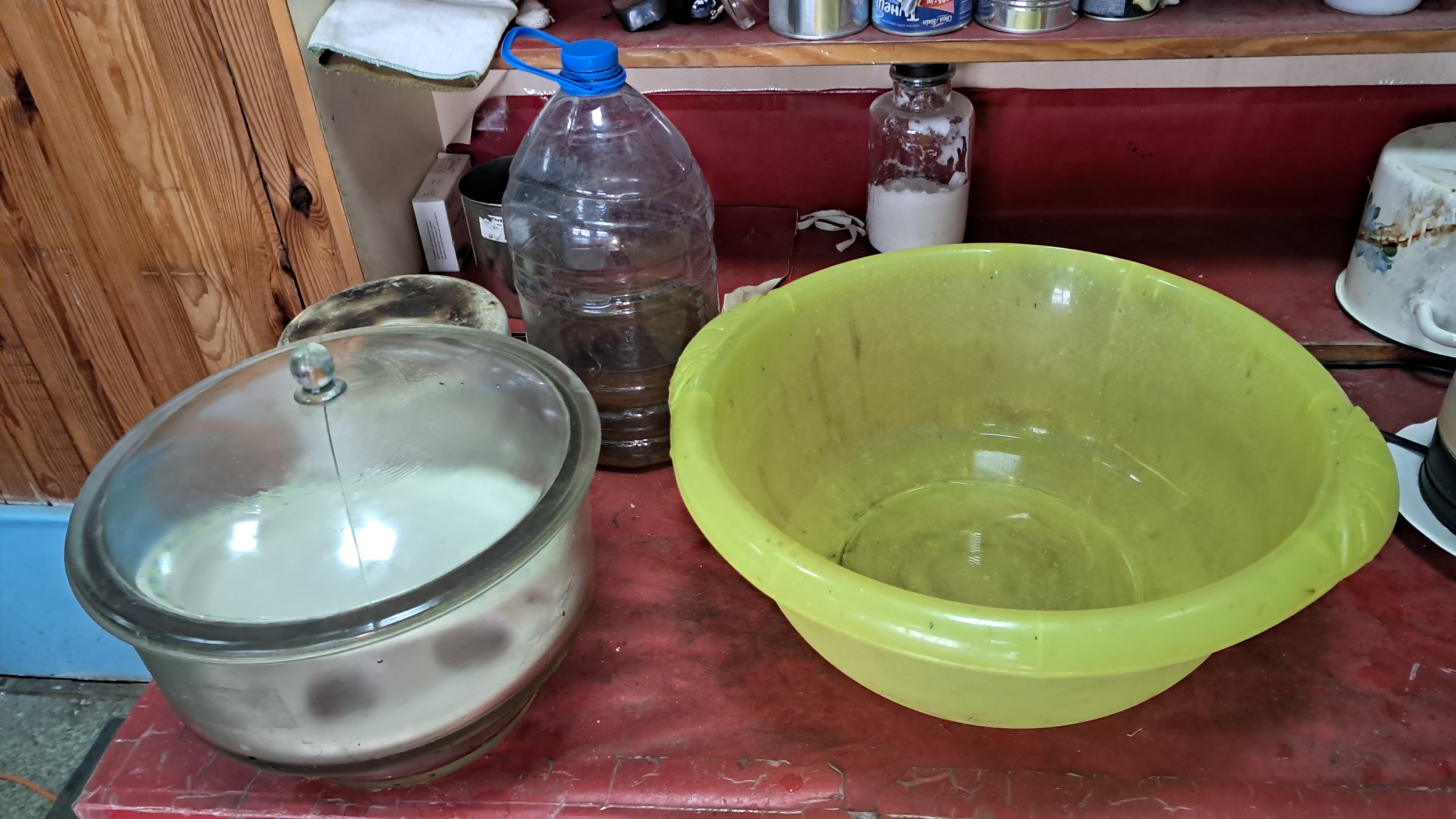
|
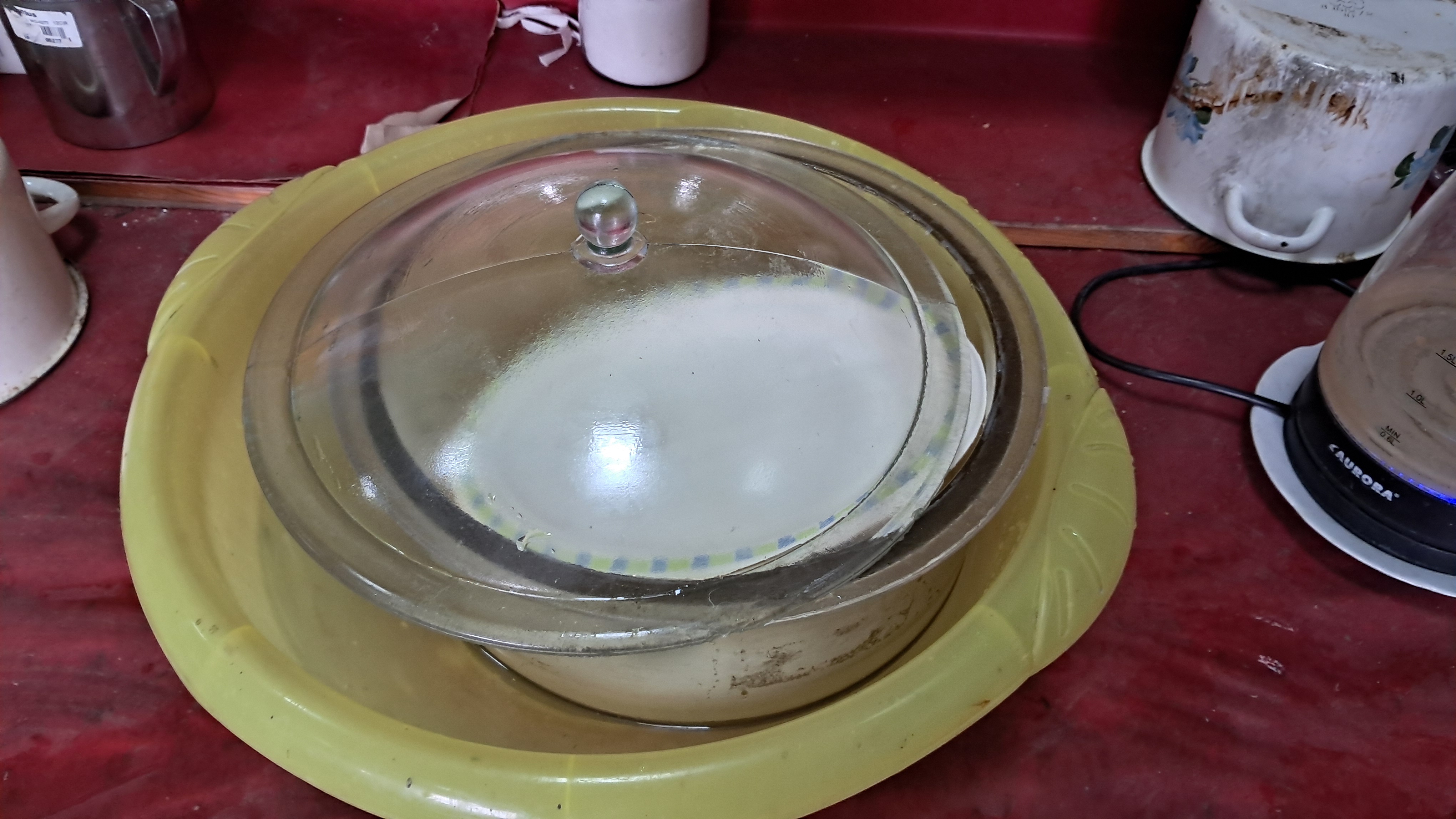
|
|
Комментарии
К1
Если откачку эксикатора проводят при помощи водоструйного насоса - получается "сушка водой"!
|